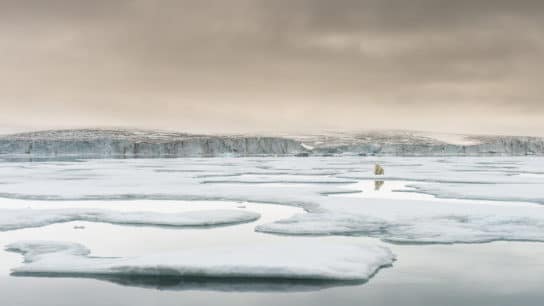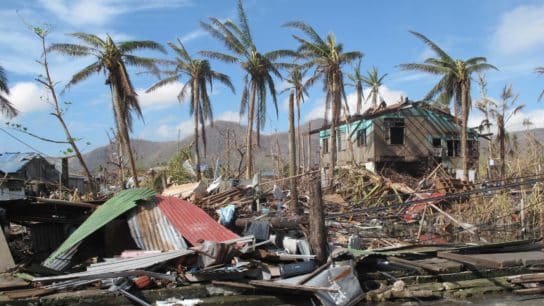While the exact causes of the ongoing Los Angeles fires are still under investigation, there is no doubt over the role California’s climate played in exacerbating the fires, fueling their rapid intensification and spread.
—
The ongoing, wind-fed LA fires have killed at least 24 people and swept through 40,000 acres in the greater Los Angeles area – an area larger than San Francisco – destroying entire communities and more than 12,300 structures.
Meanwhile, millions of people are being exposed to dangerous wildfire smoke as toxins from burning homes, cars, chemicals, plastics and fuels fill the air.
California Governor Gavin Newsom told NBC News on Sunday that the fires were likely to be the worst natural disaster in US history “in terms of just the costs associated with it.” Over the weekend, private forecaster AccuWeather increased its preliminary estimate of financial losses from the blazes from $250 billion to $275 billion.
For days, experts have talked about “a perfect storm” of climate conditions that have fueled the devastating fires. Earth.Org takes a closer look.
1. It is the first time that LA sees “extremely critical” fire weather in January
It is now clear that a lethal combination of high temperatures and very low humidity, dry vegetation, and strong offshore Santa Ana winds has fuelled the deadly LA fires, allowing them to grow and spread much faster than they could be contained. For context, very fast fires are responsible for more than 75% of the structures that burned in the US from 2001 to 2020.
For Douglas Kelley, a land surface modeller at the UK Centre for Ecology & Hydrology, these multiple factors creates “a perfect storm” for the wildfires to grow.
But while the Santa Ana winds – dry, warm winds originate from the western desert interior of the US and push towards southern California – are typical for this time of year, the abundance of dry vegetation isn’t.

As meteorologist Eric Holthaus explained, “The National Weather Service defines ‘extremely critical’ fire weather as sustained winds in excess of 30 mph and relative humidity of less than 10% in the presence of drought conditions and temperatures warmer than 70 degrees. This is the first time in history these criteria have been met anywhere in the United States during the month of January.”
Speaking with The Atlantic, Glen MacDonald, a geography professor at UCLA, said the concept of fire season no longer applies to Southern California. “You can have a fire any month of the year,” he remarked last week.
2. California is in a drought
When the fires started on January 7, Los Angeles County was tinder dry after experiencing its hottest summer in at least 130 years and receiving only 0.16 inches (4.1mm) of rain since last May.

Overall, Southern California is currently experiencing “abnormally dry” conditions following two winters of heavy rainfall in 2022 and 2023, with nearly 2.2 million people living in areas affected by a drought.
The region typically sees the bulk of its precipitation between October and April. “You’d have to go to the late 1800s to see this dry of a start to the rainy season,” MacDonald told The Atlantic last week.
Much of Los Angeles County is currently under “severe drought” conditions, with soil moisture in the area in the bottom 2% historically for this time of year, according to NASA.

When prolonged dry spells occur, vegetation becomes parched and highly flammable, transforming forests and grasslands into tinderboxes waiting to ignite. The scarcity of moisture not only dries out plants but also increases the likelihood of human activities, lightning strikes, or other ignition sources sparking fires.
Once a fire starts in these arid conditions, it can spread rapidly and uncontrollably due to the abundance of dry fuel and low humidity levels typical of drought-stricken areas.
More on the topic: Drought Conditions Affecting All US States Except Alaska and Kentucky, Greatest Number on Record
3. Climate change is influencing fire activity in North America
Climate change is amplifying extreme weather events, including wildfires.
Both the frequency and intensity of wildfires have more than doubled in the last two decades, as more frequent hot, dry, and windy conditions create the perfect fuel. And when the ecological, social and economic consequences of wildfires were accounted for, six of the last seven years were the most “energetically intense.”
Rising global temperatures, driven primarily by the burning of fossil fuels and other human activities, have contributed to an increase in “fire weather” days by drying out vegetation and soils and lowering humidity levels. Globally, wildfire seasons are now roughly two weeks longer, on average, mostly by enhancing the availability of fuel through heat and dry conditions.

The average wildfire season in Western US is now 105 days longer, burns six times as many acres, and sees three times as many large fires – fires that burn more than 1,000 acres compared to the 1970s, according to non-profit Climate Central.
In California, researchers have linked the climate emergency to a 172% increase in burned areas since the 1970s, with projections indicating a continued spread of wildfires in the years to come. Climate change has also increased the risk of extreme daily wildfire in the state by 25% on average, a 2023 study pointed out.
19 of the 20 largest wildfires in the state’s history have occurred since 2003 and half of them in the past five years, according to the California Department of Forestry and Fire Protection.
“These devastating fires are not only occurring with greater intensity but are also striking earlier than Southern California’s typical fire season, highlighting how climate change is reshaping fire regimes – the characteristic patterns of wildfire in a region,” said Kimberley Simpson, a fellow in nature-based climate solutions at the University of Sheffield’s School of Biosciences.
Featured image: California Fire Department/Flickr.
You might also like: 17 Largest Wildfires in US History
This story is funded by readers like you
Our non-profit newsroom provides climate coverage free of charge and advertising. Your one-off or monthly donations play a crucial role in supporting our operations, expanding our reach, and maintaining our editorial independence.
About EO | Mission Statement | Impact & Reach | Write for us














